Ole Gunnar Solskjaer’s Manchester United were eventually outclassed by Arsenal as the Red Devils suffered their first domestic defeat under the supervision of their Norwegian boss. What’s more surprising is that the defeat turned out to be straight-forward, as the visitors conceded an early goal before playing an end-to-end battle with the Gunners and then conceding another goal – a penalty – in the second half.
This tactical analysis below explains why Solskjaer’s approach didn’t work at the Emirates, and how Arsenal were able to stop United by clinically hitting their weak points.
Lineups
Manchester United started with a 4-3-3 tactical set up with Matic positioned in central midfield surrounded by Pogba and Fred. However, without the ball, United assumed a 4-4-2 shape which was also their dominant tactical formation throughout the game, because they conceded most of the possession to Arsenal.
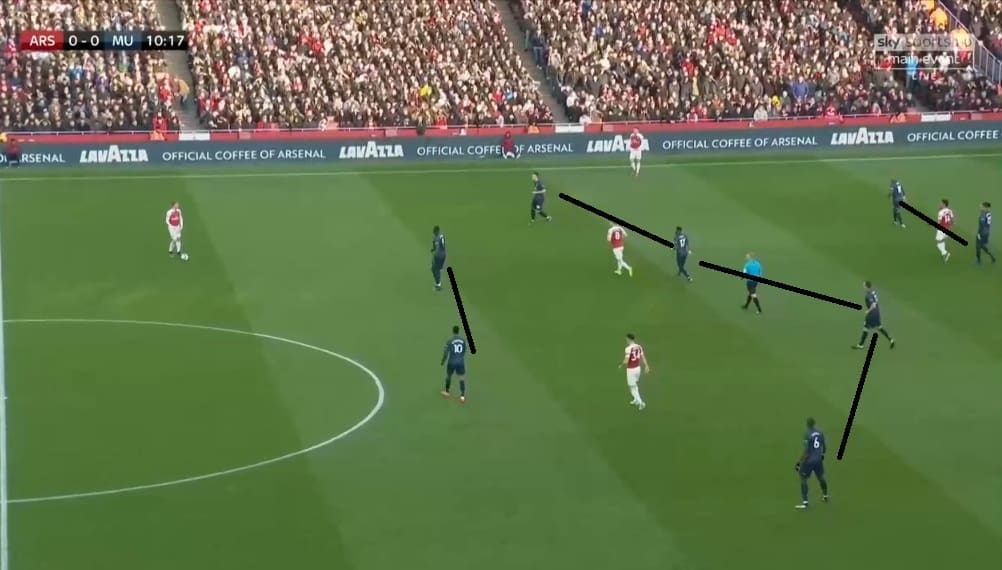
Arsenal, on the other hand, deployed their usual 3-4-1-2 formation with Mesut Ozil behind the two forwards. This also gave the home team’s front players a 3v2 numerical advantage over United’s centre-backs.
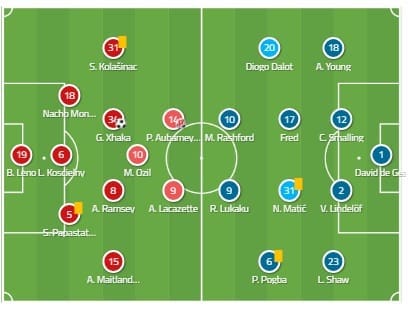
United got exposed through back line spaces
Manchester United’s back line was the most exposed of all their tactical lines. While the full-backs stayed deeper to stop Arsenal from potentially invading the half-spaces and winning the ball there, the home team had its wing-backs ready to exploit the flanks. Maitland-Niles and Kolasinac evaded Manchester United’s defensive third through their respective touch-line width. At the same time, United centre-backs were dragged away by Lacazette as space was conceded to the home team.
These movements manipulated United’s back line to loosen their focus on their defensive positioning. This caused United to concede two points that Emery’s men exploited; between the two centre-backs, and between the centre-backs and their adjacent full-backs.
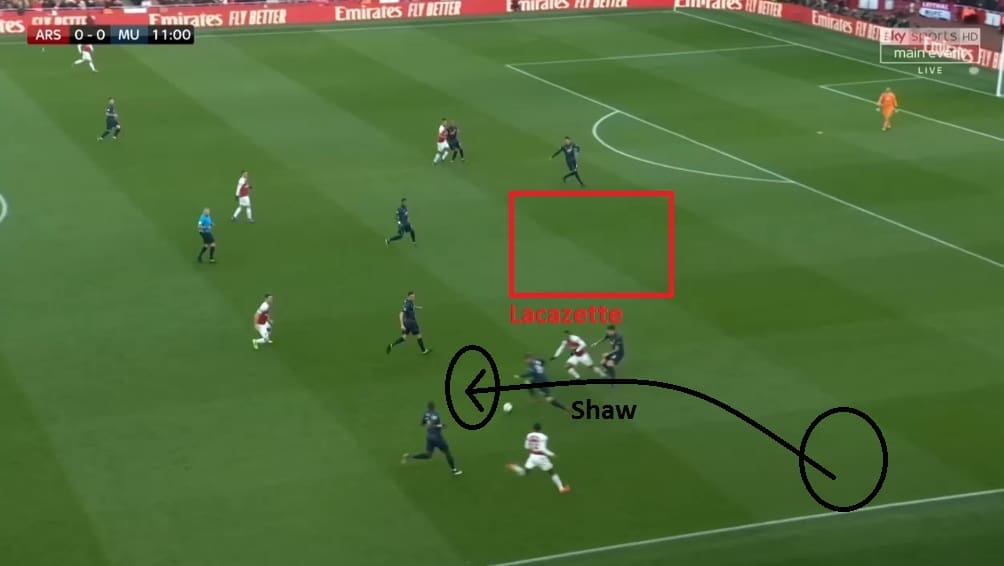
The defensive disturbances in Manchester United’s back line were further exacerbated when Pogba had to draw out from central midfield to mark Maitland-Niles while Shaw dropped deep to mark Lacazette.
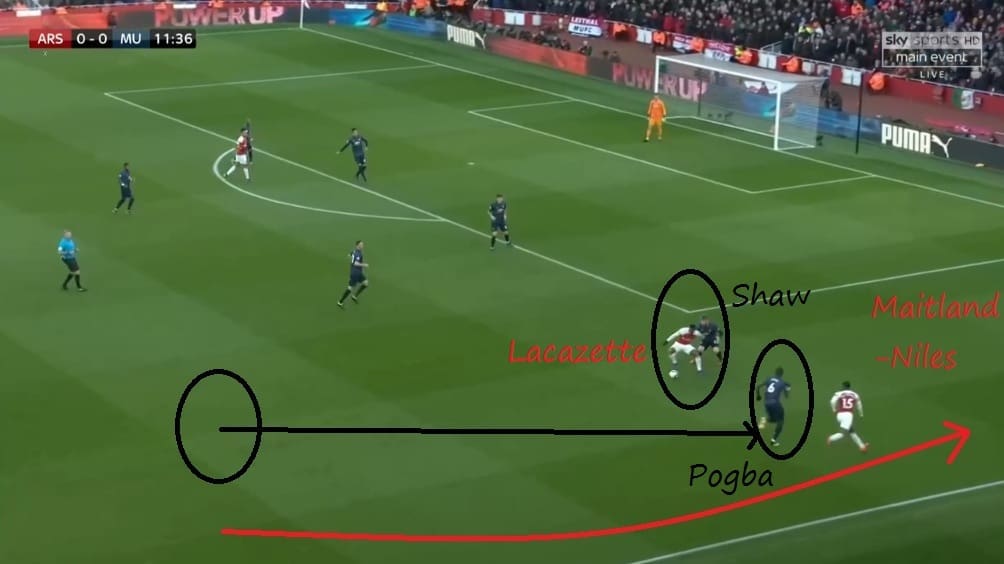
Even when Shaw sometimes drew out to mark Maitland-Niles, this created space between him and Smalling as the two centre-backs edged closer together, as shown in the image below. However, most of the time Shaw was positioned deep to pick up the opponents in the half-spaces.
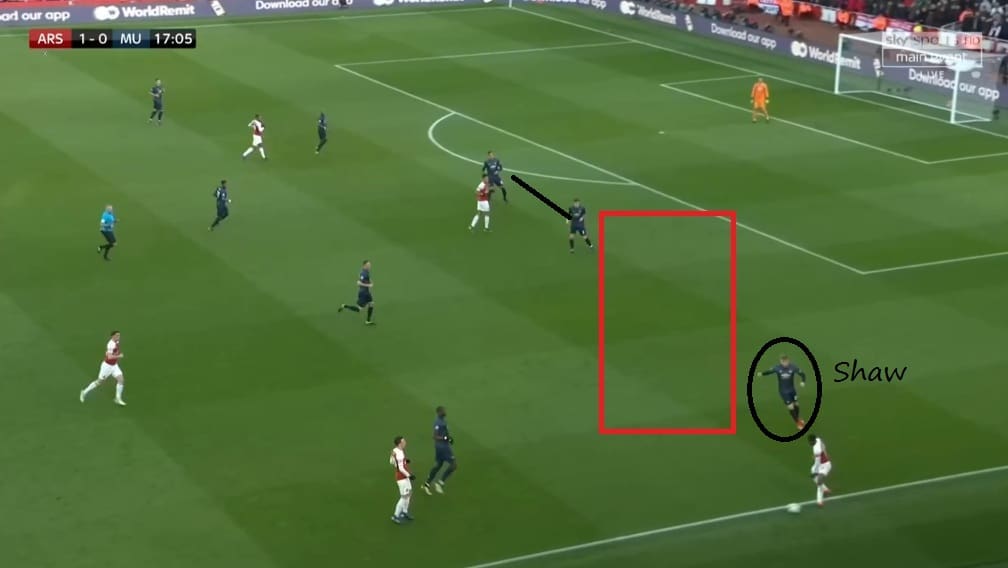
The back line spaces created as a result gave some decent opportunities to the home team to exploit the last line of defence, especially by taking long shots. That’s also how Manchester United conceded the first goal.
Aubameyang kept United centre-back Smalling away from his partner. This allowed Xhaka just enough time and space to hit a swerving shot from outside the box, although its success owed no small part to De Gea’s defensive error as well.
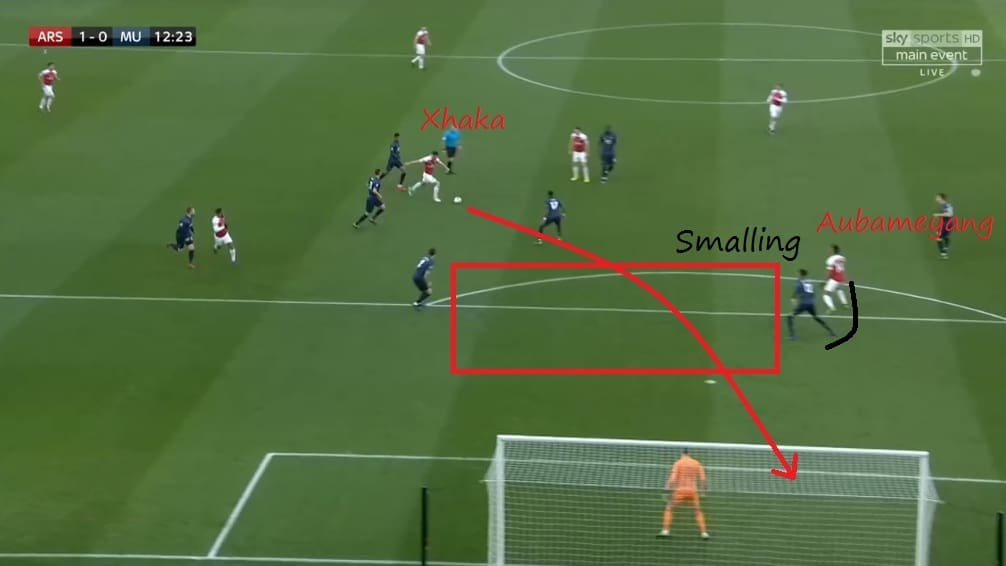
United fail to use their back line in the build-up
Be it United’s shattered back line or Arsenal’s direct game, the hosts were able to take the lead at the time when Solskjaer’s men were still gaining momentum. However, Arsenal’s strategy was to not let the ball be held among or beyond their midfield, regardless of the phase of the game. When defending, Emery’s men were quick to multi-mark their opponents and push the ball back or win it.
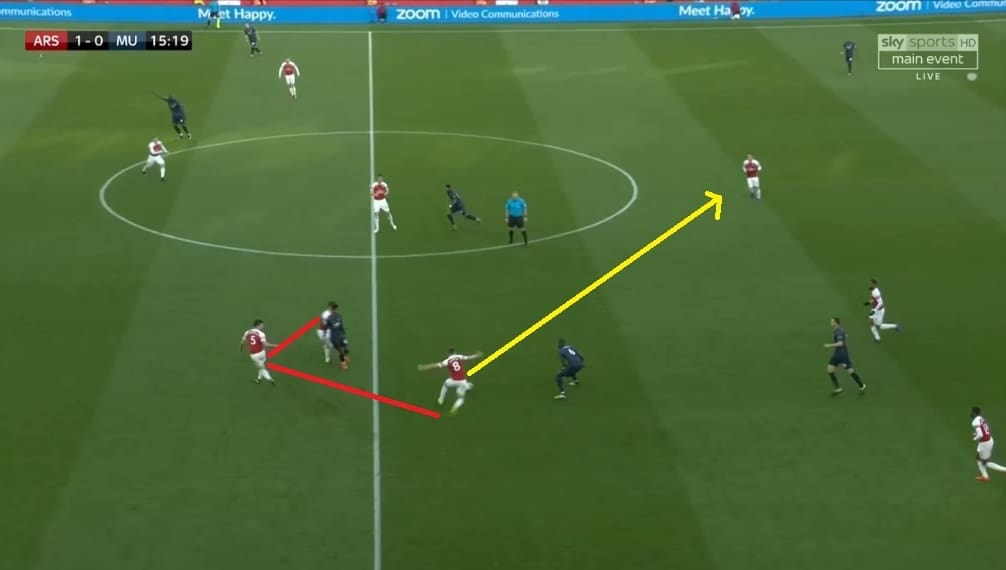
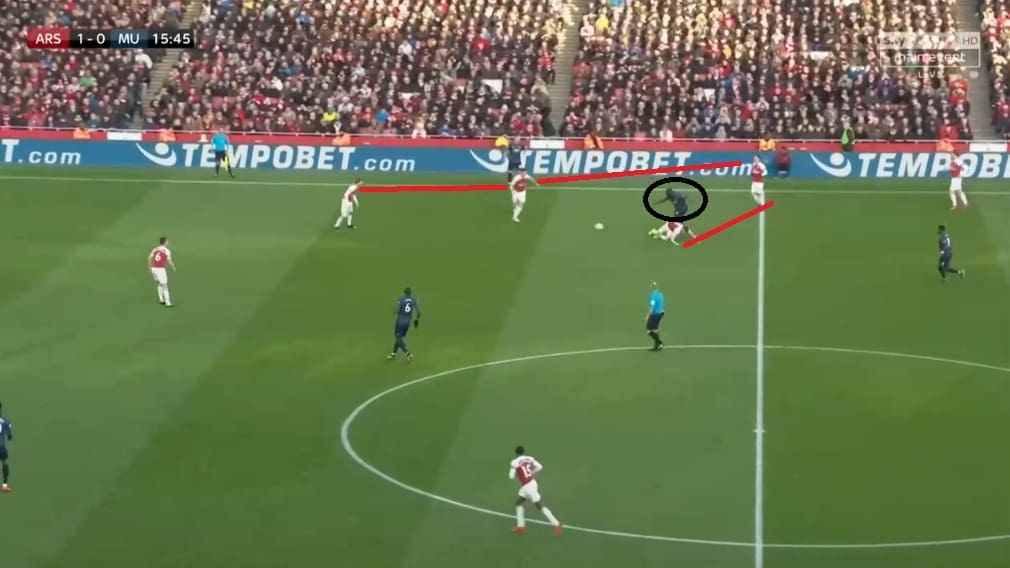
Similarly, when in possession, the Gunners played long balls to bypass United’s midfield. This went on in the majority of the first quarter of the game. The sequence of play amidst Arsenal’s direct approach opened up United’s defence which was already conceding spaces.
After conceding the goal United’s urge to equalise was intensified. They made more men available to match Arsenal numerically in midfield. This tactic allowed them to hold the ball long enough in midfield to play progressive passes into the final third.
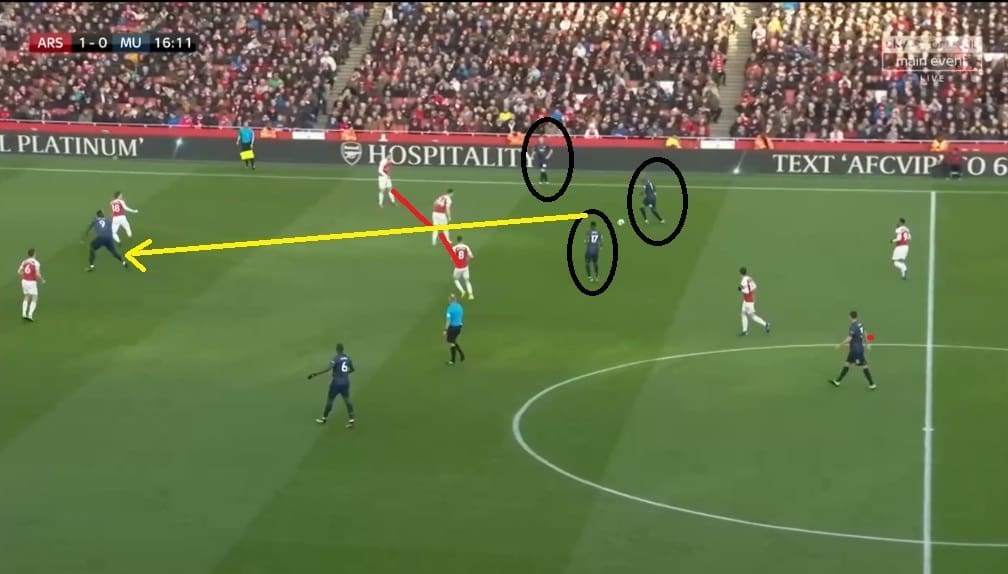
However, Arsenal’s defensive lines cleared so many of these threats. As can be seen below, Arsenal defence congested passing lanes to Rashford, with Maitland-Niles clearing the danger in this instance.
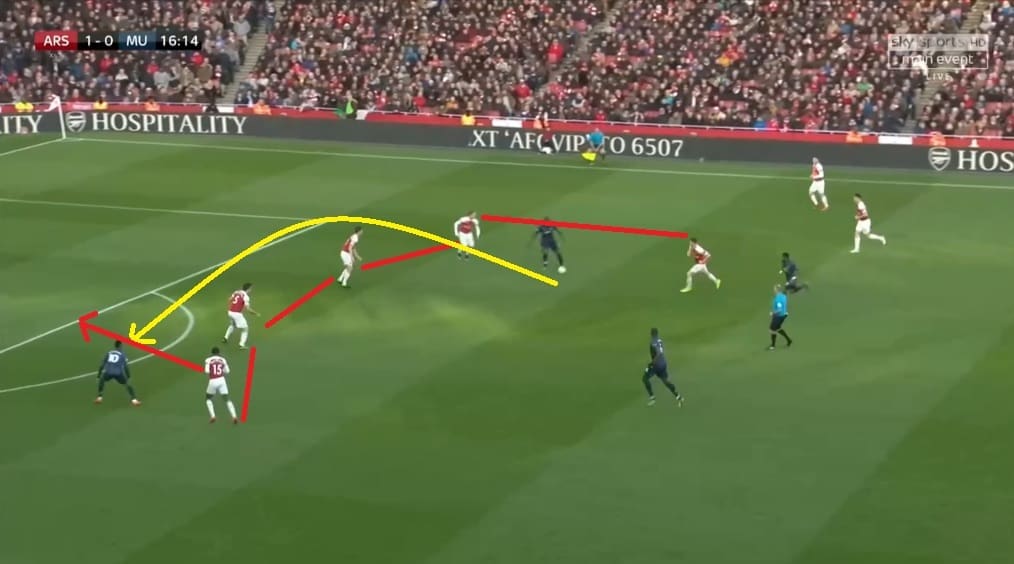
To deal with Arsenal’s defensive lines, United pushed more players near their opponents’ defence to win second balls from their clearances. This gave them multiple opportunities to score but all were saved by Leno. The deep passes played by United were dealt with by Arsenal’s back three.
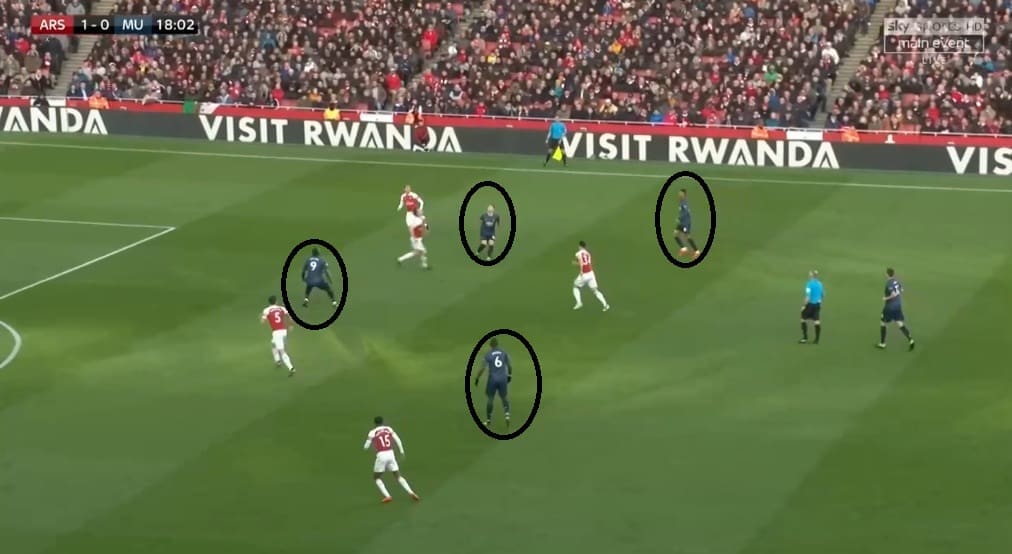
However, this tactic of pushing more men near to Arsenal’s defence created more space behind their own midfield. As a result, Arsenal were now able to hit United using this space in transitions and hold more of the play in midfield. On the other hand, during the defensive phases, United’s midfield dropped deeper, which gave space to Arsenal in the middle of the park.
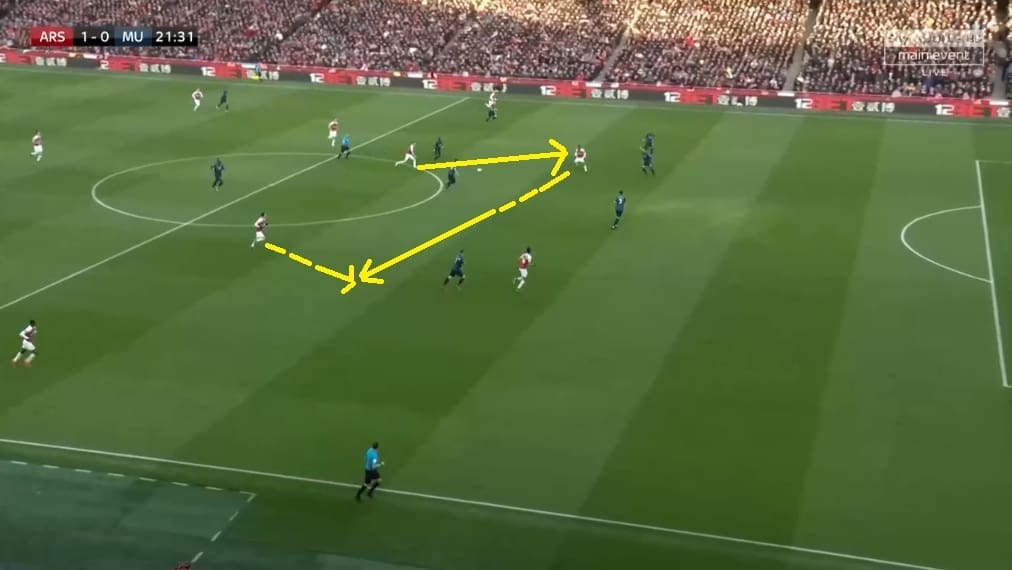
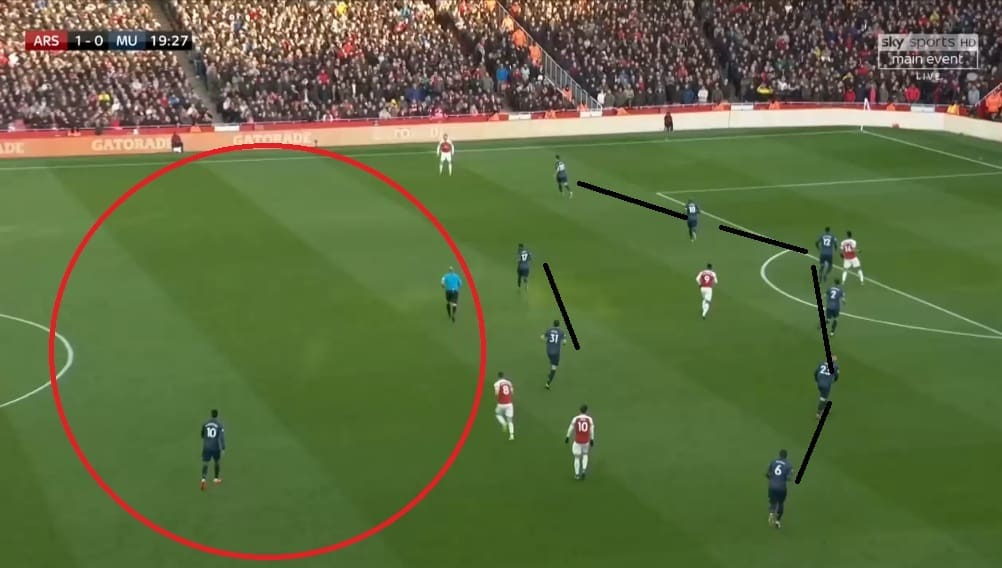
As a result, Arsenal continued to enjoy greater possession while United enjoyed possession only in defensive regions. One solution could have been to use heir defence more during builup phases, but they neglected this option and suffered as a consequence.
The rest of the half and most of the game went on in an end-to-end fashion. A lack of attacking capacity from United’s defence to play an effective role during build-up from the back restricted their chances of equalising. After the penalty, the game was already over for Manchester United.
Conclusion
To conclude, Arsenal marked their domination over Manchester United with their well-timed goal. Meanwhile United’s under-reliance on the back line to play build-up sequences amidst Arsenal’s midfield-bypassing game couldn’t earn them the much-needed equaliser.
Has Solskjaer’s system been found out? Time will tell.
If you love tactical analysis, then you’ll love the digital magazines from totalfootballanalysis.com – a guaranteed 100+ pages of pure tactical analysis covering topics from the Premier League, Serie A, La Liga, Bundesliga and many, many more. Pre-order your copy of the March issue for just ₤4.99 here, or even better sign up for a ₤50 annual membership (12 monthly issues plus the annual review) right here.

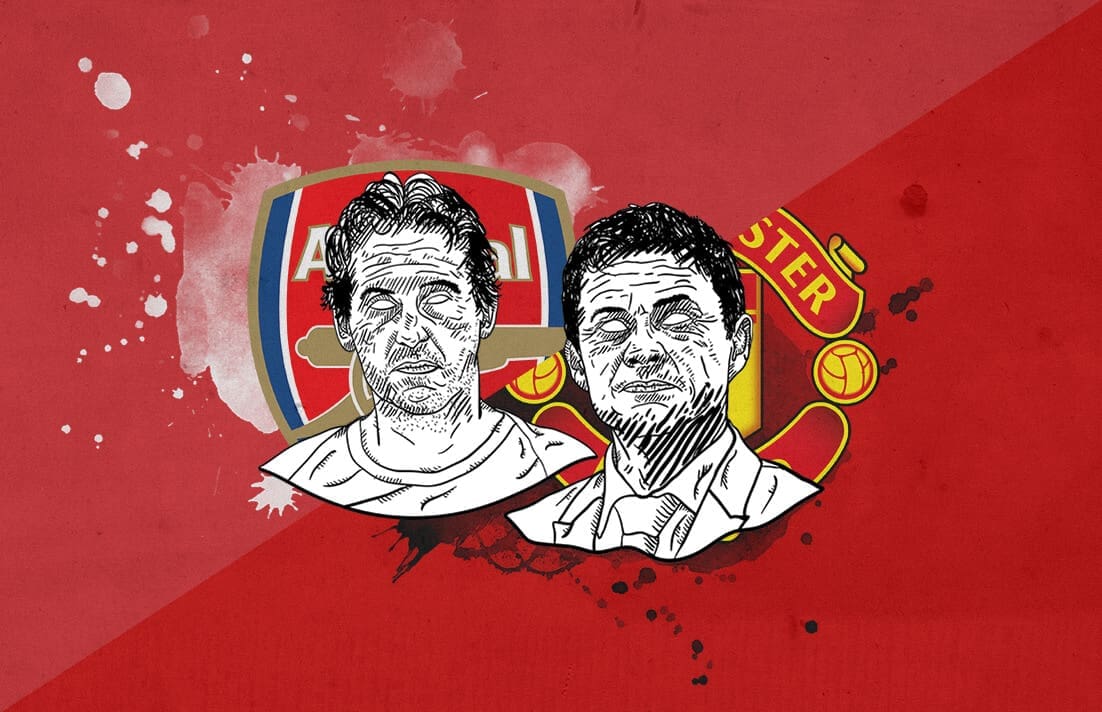



Comments